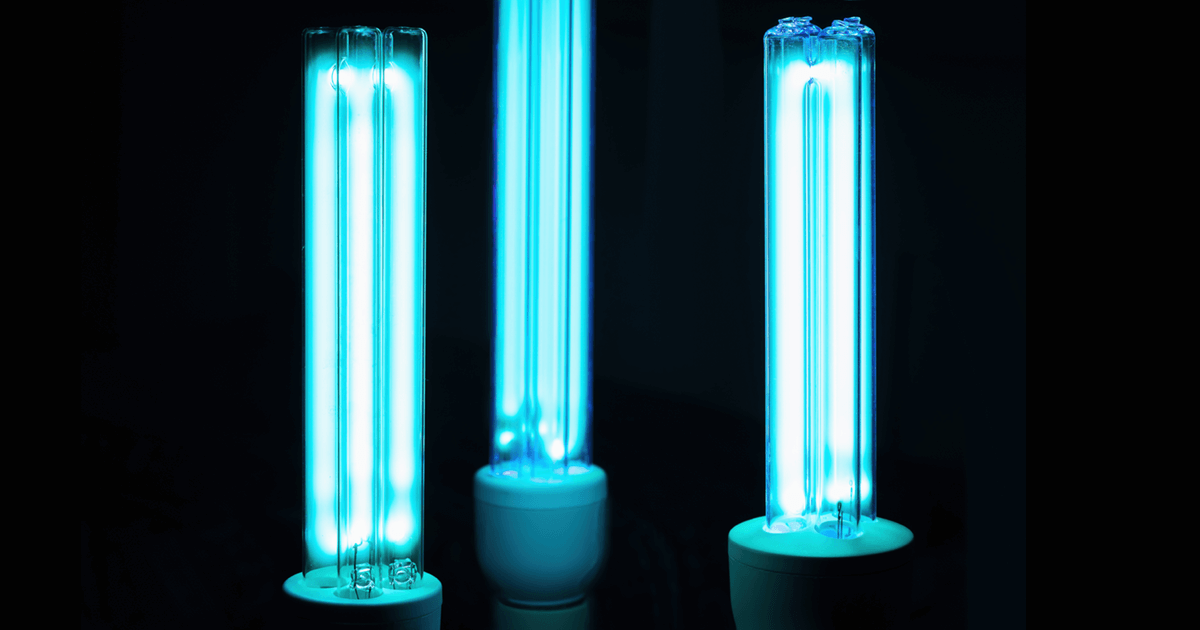
What you need to know about UVC lights and autonomous floor scrubbing robots
As society begins to prepare for the “new normal” following the global impact of COVID-19, many changes are needed. From how we travel and interact with each other to the increased demand for sanitization and disinfection, the repercussions are far-reaching.
With the increased demand for regular and consistent cleaning, there’s elevated interest in technology that offsets the additional demands on cleaning teams around the world.
In the last 3 months across social media, one particular set of technologies have garnered elevated attention: UVC light and UVC robots. Through these conversations, the effect of Ultraviolet-C light has been exaggerated beyond science and practicality.
Based on its “wow” factor alone, it went from killing a virus in 20 minutes in a highly protected environment to killing a virus in seconds, with no harm to humans. Unfortunately, this unsubstantiated buzz doesn't come without a negative impact on our global fight against COVID-19.
As a result of the social media hype, many of our customers have come to us asking if we could add UVC to our robot, Neo the autonomous floor scrubber, so that during cleaning and sanitizing, Neo would also disinfect the floor with UVC.
Although in theory it seemed like a great idea, after much investigation and research, we discovered that, unfortunately, it’s not feasible for a variety of reasons. Before we jump into that, let’s review the definition of ultraviolet germicidal irradiation (UVGI).
Ultraviolet germicidal irradiation (UVGI) is a disinfection method that uses short-wavelength ultraviolet (ultraviolet C or UVC, commonly referred to wavelengths between 200 – 280 nm) light to kill or inactivate microorganisms by destroying nucleic acids and disrupting their DNA, leaving them unable to perform vital cellular functions (17).
UVC light actually kills viruses
UVC has been proven to be an effective method of killing microorganisms — being used to disinfect hospital rooms, treat water and sanitize air-ducts (to name just a few uses). Admittedly, killing viruses with light is cool!
However, when evaluating the use of UVC disinfection in public spaces, it comes with its own set of problems, such as:
- UVC robots cannot be used practically in most public spaces to kill microorganisms effectively.
- Safety requirements are often disregarded, presenting a potential hazard to people.
- The exact UVC light source is being used ineffectively in a public setting—it would be better used in one of the countless hospitals that are waiting for their UVC equipment to be delivered.
UVC has been used in hospitals for decades, why not in public spaces?
The best answer comes from the hospitals themselves. They have access to UVC disinfection systems for their rooms, yet they don't use them to disinfect their entire floors, corridors or lobbies on a daily basis. Why not?

Source: UV Clean Team
Reason 1: Exposure time required to kill a virus at a long distance makes it impractical
Let’s forget about the social media fluff and dig into some real numbers. Medical researchers and UV experts agree on the need to expose ~1-4 J/cm2, equating to 10-40 kJ/m2 (1,2,15). This exposure will depend on the output light power of the light source being used as well as the distance from the light source to the surface to disinfect.
Accordingly, medical researchers have published exposure times ranging from 14 minutes to 57 minutes to disinfect a single hospital room using best-in-class healthcare equipment (1,2). Manufacturers of the same equipment advocate a minimum of 15 – 20 minutes to disinfect a simple patient room (4,5,6).
The reality is that UVC exposure times required to kill a virus are 5 – 20 seconds at a ~10cm distance, increasing quadratically with the distance, reaching several minutes at 1m, and a minimum of 15 minutes in a small room.
How practical would it be to blast light for 20+ minutes in an open corridor, then move 2m away and do it again? Assuming a 60m long corridor ward, it would take 10 hours to disinfect, with the ward being closed to people during that procedure.
Reason 2: UVC is subject to safety regulations (or best practices if not)
“UVC is really nasty stuff — you shouldn’t be exposed to it” (12). The UVC germicidal effect happens predominantly at a wavelength of 254nm, rupturing proteins and DNA within cells. In other words, it kills cells by breaking their walls, and those which were not destroyed become incapable of reproducing (7,8). Light doesn't differentiate between a virus and a human cell.
Europe, Canada and the US recognize that shortwave UV radiation (UV-C) poses the maximum risk. ISO standards (among others) require the use of personal protective equipment, UV hazard signage and proper access control, while the ACGIH set the exposure dose limit during a work day to 3 mJ/cm2 — meaning the maximum allowable daily exposure to a person is lower than the exposure required to disinfect efficiently (7,9,10,16).
Consequently, healthcare UVC disinfection systems come with processes and access control equipment to ensure personal protection (3,4,5,6). But how do you ensure safety for UVC disinfection when you cannot block an entire corridor for the hours of exposure required?
Reason 3: UVC does not replace chemical sanitization
All of the efforts described above don't remove the need for chemical sanitization. Providers of healthcare UVC disinfection equipment and researchers are unanimous on the need to perform a manual cleaning and sanitization first; UVC disinfection augments the manual cleaning process by reaching areas that may have been missed, but it doesn't replace that crucial process (2,4,5,6).
Hospitals still regularly chemically sanitize their floors, high-touch surfaces and equipment. But they recognize that extreme levels of cleaning aren't required everywhere, nor are they worth the efforts UVC disinfection requires.
Then why are hospitals using UVC robots?
Blue Ocean Robotics, a Danish company, is considered a leader in UVC robots with autonomous mobility. Their “UVD robot” provides an infection prevention solution that autonomously irradiates the patient’s room while an operator is able to remotely monitor in real-time (11).
Like Neo, our autonomous floor scrubbing robot, UVC robots are part of the janitorial team, ensuring a more consistent clean while keeping people safe. It also means janitorial staff can refocus labor on value-added tasks.
Some other UVC “robots”, like Xenex’ and Skytron’s, feature automation without autonomous mobility, maintaining the goal to ensure better safety and consistency (4,5,6), while other solutions include static light fixtures in ceilings or walls (2). These products are designed to augment disinfection in specific rooms and don't pretend to provide disinfection in larger common areas, even in healthcare.
How about a UVC light source on a floor scrubber?
Applying what we’ve learned above, there are three main reasons why it’s not effective to add UVC light to autonomous floor scrubbers such as Neo. These include:
- Pre-sanitizing Needs: Cleaning and sanitizing still needs to take place prior to UVC disinfection. Either the robot would be required to clean first with a second pass for disinfection, or the job of cleaning would have to be done manually first.
- Speed of Travel: A robot equipped with a UVC light bulb at ~10cm from the floor creates a 20cm wide strip of light; it needs 5 seconds of expose (absolute best case) to kill a virus on that surface — it would move 20cm every 5 seconds, or 1m every 25 seconds. A typical floor scrubbing machine moves at ~1m/s, going 25 times faster than required to kill a virus. It's the same speed difference as driving full-speed on a highway instead of walking.
- Length of Time: With a 1m long light bulb moving 1m every 25 seconds, it takes 25 seconds to cover 1m2, translating to 250,000 seconds or ~70 hours to disinfect a 10,000m2 floor(~65 hours to appropriately disinfect a 100,000ft2 floor). In comparison, cleaning and sanitizing only takes a few hours in the same place using the same machine (and one can do it again 10+ times within the 70-hour timeframe).
Such a robot would be impractical using its own UVC light source to disinfect.
Ineffective UVC disinfection systems come with a negative impact on our global fight against COVID-19.

Source: Sunburst UV Bot Disinfecting at Northpoint City Shopping Mall, a latest weapon against COVID-19
With the increased demand for UVC disinfection systems, sales are reaching record highs (12). Partly because of difficulty sourcing UV lights, lead times have also suffered, increasing from weeks to months or more.
These sources are becoming rarer and expensive, and hospitals are waiting for their equipment to be delivered. UVC sources should only be used in applications that deliver a safer, cleaner environment.
Conclusion: Continue to clean and sanitize public areas with a chemical solution
In general, remember that UVC requires long exposures with the appropriate system. If exposure is long enough to kill a virus, it’s also harmful to you.
At Avidbots, we believe robots should be created for the benefits they provide. Healthcare professionals and researchers have already shown how UVC can kill microorganisms — its use has to be combined with a chemical cleaning process, with the appropriate UVC exposure time and with the appropriate safety protections. UVC solutions that don't meet those criteria are not only ineffective, they also add barriers to our real fight against COVID-19.
Avidbots recommends you continue cleaning and sanitizing your floors with Neo, the autonomous floor scrubbing robot.
If you’d like to discuss this topic further or learn more about how Neo can help in the fight against COVID-19, please contact us.
Sources:
(1) Evaluation of an Ultraviolet C (UVC) Light-Emitting Device for Disinfection of High Touch Surfaces in Hospital Critical Areas (Beatrice Casini & al, 2019) https://www.ncbi.nlm.nih.gov/pmc/articles/PMC6801766/
(2) Comparison of UV C light and chemicals for disinfection of surfaces in hospital isolation units. (Andersen BM & al, 2006) https://europepmc.org/article/med/16807849
(3) CleanSlateUV (2020) https://cleanslateuv.com/healthcare
(4) UV Sterilization Robots – The Latest Infection Prevention Technology in Disinfecting Operating Rooms (Meditek) https://www.meditek.ca/uv-sterilization-robots-infection-prevention-technology-operating-rooms/
(5) UVC Disinfection, A comprehensive portfolio to meet your unique needs (Skytron) https://www.skytron.com/products/infection-prevention/uvc-light-disinfection-robots/
(6) LightStrike Germ-Zapping Robots, Intensity Matters (Xenex) https://www.xenex.com/our-solution/lightstrike/
(7) ISO 15858:2016 UV-C Devices — Safety information — Permissible human exposure (International Standards Organization, 2016) https://www.iso.org/obp/ui/#iso:std:iso:15858:ed-1:v1:en
(8) About UVC (Klaran) https://www.klaran.com/klaran-university/about-uvc
(9) Ultraviolet radiation (Canada Occupational Health and Safety) https://www.ccohs.ca/oshanswers/phys_agents/ultravioletradiation.html
(10) Office of risk management – UV exposure limits (University of Ottawa, 2020) https://orm.uottawa.ca/my-safety/em-radiation/uv/exposure-limits
(11) Reduce Hospital Acquired Infections with the UV Disinfection Robot (Blue Ocean Robotics) http://www.uvd-robots.com/
(12) There’s only one type of UV that can reliably inactivate Covid-19 – and it’s extremely dangerous (Zaria Gorvett, BBC, 2020) https://www.bbc.com/future/article/20200327-can-you-kill-coronavirus-with-uv-light
(13) Pricing and live lead times (UV light technology, 2020) https://www.uv-light.co.uk/pricing-and-live-lead-times/
(14) What about the lead time of UV light holder from placing an order to delivery? (TNUVIR, 2020) https://www.tnuvir.com/what-about-the-lead-time-of-uv-light-holder-from-placing-a-order-to-delivery
(15) IUVA COVID-19 FAQ (International UV association, 2020) http://iuva.org/iuva-covid-19-faq
(16) Ultraviolet Radiation: TLV® Physical Agents 7th Edition Documentation (American Conference of Governmental Industrial Hygienists. 2013). www.acgih.org/forms/store/ProductFormPublic/ultraviolet-radiation-tlv-r-physical-agents-7th-edition-documentation
(17) Ultraviolet germicidal irradiation (Wikipedia) https://en.wikipedia.org/wiki/Ultraviolet_germicidal_irradiation
Related articles
Subscribe to the Avidbots blog!
Stay in the know about all things Avidbots plus the latest industry and technology insights.